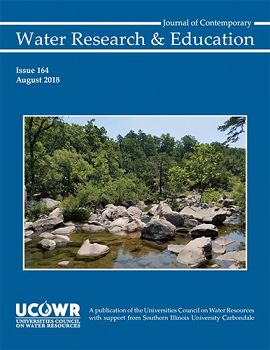Wendt et al., 2018
Scientist–Nonscientist Teams Explore Methane Sources in Streams Near Oil/Gas Development
Wendt, Anna K., Todd Sowers, Scott Hynek, Jacob Lemon, Erika Beddings, Guanjie Zheng, Zhenhui Li, Jennifer Z. Williams, Susan L. Brantley (2018)
Journal of Contemporary Water Research & Education, Issue 164, Pages 80-111
-
Shale Hills, STAFF
-
National, Eel, Luquillo, Shale Hills, INVESTIGATOR, COLLABORATOR
Abstract
New techniques are needed to distinguish between leakage of methane (CH4) into surface waters from gas wells and natural sources. Here, scientists worked with >50 citizen scientists in a hydrocarbon-rich basin (Pennsylvania, U.S.A.) to measure methane concentrations ([CH4]) in streams. These measurements were combined with published observations to form a reconnaissance dataset. The dataset was then used to categorize sites as background or as impacted by other sources of gas. For 479 samples at 131 sites, 470 were supersaturated with respect to the atmosphere (>0.08 µg/L). Sites with the lowest concentrations generally were located in low-productivity, sandstone-underlain upland streams, while other streams contained CH4 from sources in addition to atmospheric. The median of 63 sites not located near wetland habitats and not affected by known thermogenic influxes yielded an estimate of background [CH4] in the streams, 0.5 µg/L. The highest individual measurements (~70 µg/L) in the stream dataset were observed in one site near a wetland and one site near a putatively leaking gas well. Inspection of the dataset revealed that values of [CH4] above a threshold for non-wetland sites, 4 μg/L, signals gas is likely deriving from sources such as leaking gas wells, shallow organic-rich shales, coal, or landfills. Using historical and local volunteer knowledge, we discovered 12 non-wetland sites above the threshold that are potentially contaminated by such sources. Although sources of CH4 cannot be proven from such surveys of [CH4], stream sampling with nonscientists nonetheless allows discovery of sites of potential contamination that can be further investigated.
Citation
Wendt, Anna K., Todd Sowers, Scott Hynek, Jacob Lemon, Erika Beddings, Guanjie Zheng, Zhenhui Li, Jennifer Z. Williams, Susan L. Brantley (2018): Scientist–Nonscientist Teams Explore Methane Sources in Streams Near Oil/Gas Development. Journal of Contemporary Water Research & Education, Issue 164, Pages 80-111 . DOI: 10.1111/j.1936-704X.2018.03286.x
Explore Further



